How to water cannabis plants in hydroponic systems ?
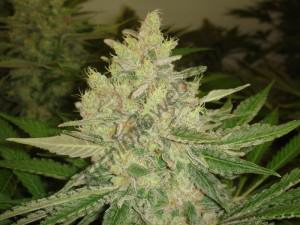
How to irrigate cannabis in hydroponic systems?
Marijuana is a plant that adapts very well to changes, we can choose any of the different growing media on the market to easily grow it. The most common methods of cultivation are; soil and hydroponic systems - an inert substrate like coco coir, clay pebbles, rock wool or mapito - without forgetting the aeroponic systems, a growing method which is now increasingly used.
Between the different hydroponic and aeroponic growing systems we can find clear differences among the used substrates, although they are all inert. We will have to keep in mind all these differences when setting up our growroom. The fertilisation or fertirrigation in hydroponic systems will vary depending on the chosen system. Then, how to know what is the best way to fertilise our plants according to each system?
We'll start discussing each substrate separately and analyzing their virtues and faults, so that each grower can easily choose between his/her favourite hydroponic growing system and understand its functioning, advantages and disadvantages.
Growing Marijuana in Coco Coir
Coco Coir, as it’s well known, is an organic substrate from the fibre that surrounds the coconuts, the fruits of the coconut trees. After being processed and treated, it will be suitable for growing marijuana or for other agricultural uses. The commercial coco coir that we find for growing marijuana usually has a granulometry - thickness of the coconut fibres - quite appropriate for a balanced retention and evaporation of the humidity.
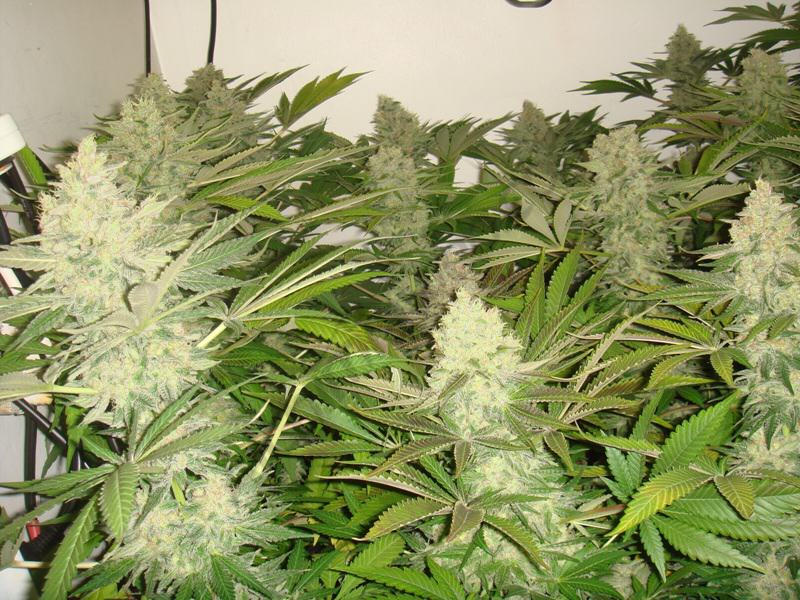
This ability to retain the humidity but not the water makes the substrate being always - or almost always - oxygenated, preventing the roots to suffer in case of over-irrigation. Moreover, when periods of drought occur, the roots aren’t compressed with the substrate, because when the coco coir dries it has almost no density and doesn’t compress the roots, keeping them more protected than with other substrates.
In this case, coco coir won't compact as it happens with the soil - which compresses the roots and is difficult to hydrate again - or in aeroponic growing systems ; in case of a failure in the irrigation system the roots will dry and the plant will be dead in a few hours, depending on the ambient humidity level of the rootball.
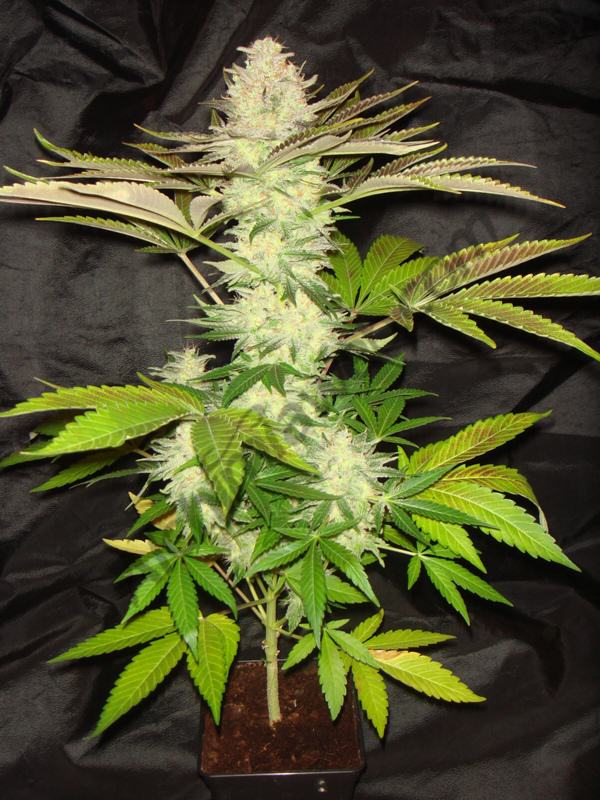
The advantages of coco coir in this case are more than proven; when the plant is dried and dehydrated it recovers much faster than the same plant grown in soil in the same conditions. The damage caused by dehydration are very reduced compared with those caused on soil, since the recovery of the plant is much slower than using coco coir. Therefore, the use of coco in hot countries like Mexico is very extended to prevent problems associated with drought.
During the growing of marijuana plants in coco coir, the irrigation will vary both in dosage, quantity and concentration of the EC and PH levels. In the first stage of the plant's life we will try to take advantage of the already mentioned characteristics of the coco, performing a manual irrigation with a little amount of water to create a humidity period followed by another of drought, making the roots of the plants or cuttings to expand in search of the humidity on the sides of the pot.
The amount of water depends on the size of the pot; in this case, you can use from 10 to 15% of the capacity of the plant's pot to water it, so it gets dry relatively fast and we can irrigate again with the same amount of ml/day.
During the first weeks of growing - and until the second week of flowering - you have to gradually increase the amount of nutrient solution as well as the EC levels, always keeping a balance between the different nutrients. Once the second week of flowering has passed, you can choose to use a simple automatic irrigation system with a tank - which you'll use to mix the nutrient solution - and a water pump to irrigate all the plants during a period of a week.
This automatic irrigation system will also vary in quantity and concentration as the flowering period goes on; we can use a simple digital timer with 8 on/off programs to modify the duration of the irrigation period at our own will.
Coco Coir will help you to know how many irrigations you can provide to your plants before they suffer by an excess of humidity. You can perform as many irrigations as the speed of the drying process of the substrate allows you. For example, if you make 3 irrigations per day, the substrate should be about 30% to 50% dried before watering again. In the last weeks of flowering, you can reduce this humidity range to provide all the necessary nutrients for an abundant flowering and, on the other hand, make a root flush to evacuate the nutrient wastes in the substrate as well as to facilitate the loss of nutrient reserves in the marijuana plants.
It’s easy to detect when the coco coir dries, given that this substrate change its colour. It acquires a light brown colour when it is dry, while showing a dark brown when it’s wet. At the end of the flowering phase it won’t be necessary to have this drought period because the plant is trying to feed and finish ripening.
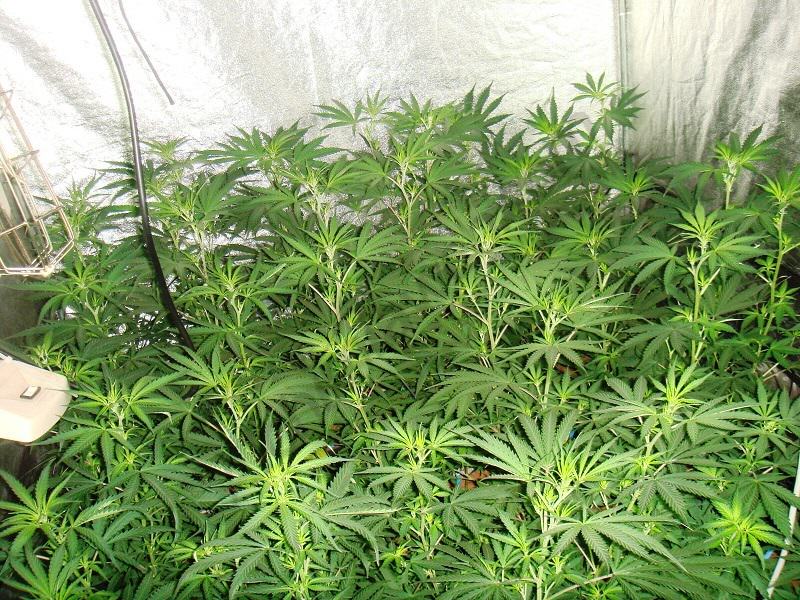
If our cannabis plants have been well fed, at the end of the crop they won’t need more nutrients and it’s possible to irrigate without fertilisers to leave the plants free of reserves, achieving a final better taste and smell of the buds. During this final phase - two last weeks before harvest - you can continue using vitamins, amino acids, elicitors, enzymes, or any other product that facilitates the plants to spend their reserves of nutrients. You can observe how the colour of the leafs changes from an intense green to a pale yellow as the plant loses its nutrient reserves.
EC levels will vary according to the number of irrigations applied to the plants. The coco coir has the ability to retain an optimal amount of nutrients through its fibres, so that the more irrigations you make, the lower should be the EC, because the plants will have a greater availability to feed. Indica cannabis plants can be irrigated with an maximum EC level of 2 - 2.2 in those weeks in which they require more nutrients; for this type of plants, this period is usually during the 6th and 7th weeks of the blooming phase in the case that they have a total flowering period of 8-9 weeks (according to the grown genetics). You should use high EC levels only in the case of making few irrigations per day or making only a manual irrigation if you don't have an automatic watering system .
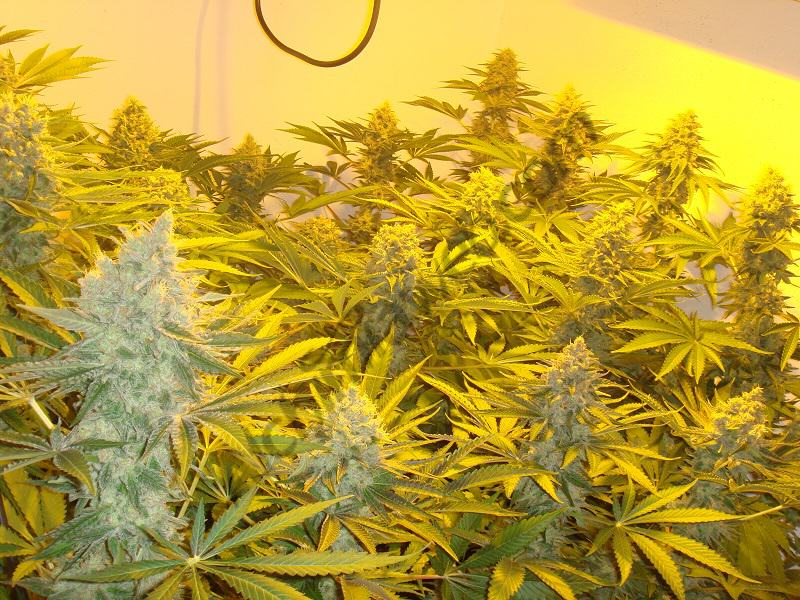
If you have an automated irrigation system and perform a greater number of irrigations per day during the flowering stage, you can lower and set the EC level at a maximum of 2.0, always checking the plants. If you observe that everything is fine, you can maintain this EC level during the following weeks, or otherwise reduce it in the case that you see that the plants are saturated. It should be noted that cannabis strains have different EC level tolerances, so that some strains may show sympthoms of over-feeding while others may require more nutrients when using the same nutrient solution for both of them.
The most efficient way to grow hydroponic marijuana is using a single strain, so we have a homogeneous crop. In the case of growing more than one strain, it's advisable to choose varieties belonging to the same family - as happens with the Blue, White, Kush and Afghan families - or which by default are similar in their growing features, considering their vigour, flowering time and acceptance of nutrients.
Basic growing diagram in COCO COIR

* EC= Depending on the condition of the plants you can use an EC level or another. You can even maintain the EC value of the previous week if you observe that the plants are very loaded with nutrients.
* PH = the Ph level can fluctuate, it can be reduced to 6.0 and allow it to reach a 6.2 or 6.4 value, when we will reduce it again to 6.0 and irrigate with a suitable PH for the plant.
Marijuana growing in hydroponic systems
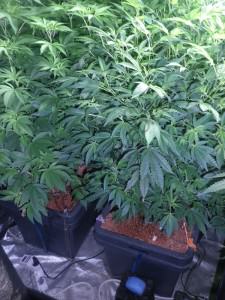
Hydroponics is one of most diversified growing methods for cannabis cultivation; there are many and different hydroponic systems, but all have a basis in common. All you have to do is to adapt the type of irrigation according to your hydroponic system and your substrate.
The basis of hydroponics is simple: it's based on providing nutrients to the plants through fast-absortion chelated fertilisers in an inert substrate like rock wool, clay pebbles, mapito etc…
By using a growing system of automatic irrigation - either recirculation or non-recovery systems - marijuana plants are perfectly fed. If we use clay pebbles, it's very important to stabilize the PH of the substrate to prevent any kind of problem with the PH during the cultivation. If this stabilization of the PH isn’t done, the plants will live in an unstable environment with many difficulties to absorb nutrients. Moreover, in recirculation systems we may find an imbalance in the nutrient solution tank caused by the PH of untreated clay pebbles, which causes nutritional deficiencies on marijuana plants.
In recirculation systems - where the nutrient solution is always entering and leaving the tank to make its closed irrigation loop - the Ph and EC levels can be easily altered by impurities from a dirty or unstabilized substrate. In non-recovery systems these factors are also altered but in a lesser degree, and are easier to control given that the solution used for watering our plants doesn’t return to the tank and thus can't modify its initial composition.
It’s important to point out that in this growing system the roots are very exposed to the air, with a direct dependency on a constant humidity to develop without problems. As soon as the roots suffer stress from a lack of humidity they will be seriously affected, since they don't have any protection system as happens in the case of coco coir, where the rootball is less exposed to the air and dries out much slower than in clay pebbles, where the air is introduced with more ease. On the other hand, if these factors are under control and we don't make any mistake, the growth of the plants in this kind of systems is explosive.
The irrigation methods in these growing systems vary greatly from one to another; we can find systems like the Dutch Pot Hydro , in which William from GHE recommends a constant 24-hour irrigation. There will be growers who prefer to schedule a few irrigations per day with a timer, watering every 15 minutes. Others may prefer a 15-minute irrigation for each hour. According to the chosen system we must set the correct irrigation program, as happens in the case of growing in rock wool slabs.
In these cases it’s important to remember that each grower must find out the ideal irrigation time for his/her growing space, because it will always vary depending on several factors - temperature, humidity, ventilation, air renewal,... - that will make the substrate to dry out faster, so we'll have to make more irrigations always adapting the EC level according to the present week and the needs of the plant.
In these hydroponic systems, the nutrition of the plants is more effective than in coco coir or soil. We should lower a few points the maximum EC levels and ckeck the plants everyday to find the optimal EC for each strain.
Growing diagram in CLAY PEBBLES

* EC= Depending on the condition of the plants you can use an EC value or another, you can even maintain the EC of the previous week if you observe that the plants are very loaded with nutrients
* PH = the Ph can fluctuate, it can be reduced to 6.0 and allow it to reach a 6.2 or 6.4 value, when we will reduce it again to 6.0 and irrigate with a suitable PH for the plant.
*(2.0) = Depending on strains
Growing Marijuana in Aeroponic Systems
Aeroponics is the evolution of the hydroponic systems; the main difference between them is that, in aeroponic systems, the roots are suspended in the air without any physical sustenance. As they haven’t a substrate in which to grow and maintain the humidity for the roots, the irrigation will be different from hydroponic growing systems that have a physical sustenance.
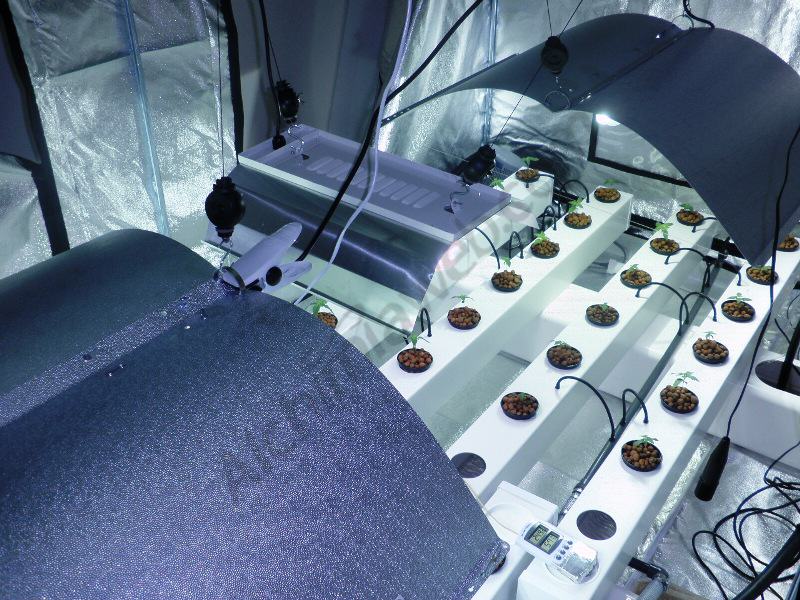
Aeroponics has, like any other growing system, advantages and disadvantages. In this kind of setup, any mistake can be observed very quickly in the plants; in these growing systems cannabis plants detect rapidly all feeding and environmental changes, since they don't have any physical buffer to maintain constant PH and EC levels.
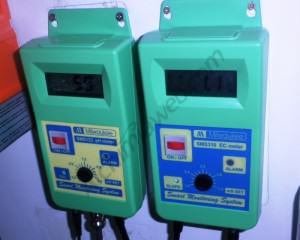
If the PH, the EC and the humidity in the root system isn’t extremely controlled within logical growing parameters, plants won’t grow or bloom as they should. Otherwise if you have an exhaustive control of all the factors that affect the development of your marijuana plants, you can get very abundant harvests of first quality buds. You will also enjoy the advantages that accompany these growing systems, such as the vegetative speed and the yield of the cannabis plants, which is really impressive.
Plants grown in these type of systems may reduce up to 3 weeks (or even more) the period of growth than plants grown in soil. This fact is based on the non-existence of the substrate. There is no resistance for the roots to develop so they can grow and expand as long as they are fed with a good fertiliser in the right amounts.
It should be mentioned that, in these aeroponic systems, the oxygenation, temperature and renewal of the nutrient solution must be controlled at all times, as well as the correct EC and PH levels. A high temperature of the nutrient solution can create fungi in the roots, decreasing the absorption of nutrients by the plant, since the oxygenation of the water will be much lower and fertilizers will also be less effective.
If in hydroponic growing systems the nutrition of plants is very fast and requires minor EC levels than in soil or coco coir, in the case of aeroponics it happens with even more difference. In this system the roots receive micro-particles of water that adhere to the roots, which causes a very rapid absorption of the available nutrients. This fact makes that plants grown in aeroponic systems require a lower concentration of nutrients than in other growing media.
Growing diagram in AEROPONICS

* EC= Depending on the condition of the plants you can use an EC value or another, you can even maintain the EC of the previous week if you observe that the plants are very loaded with nutrients
* PH = the Ph can fluctuate, it can be reduced to 6.0 and allow it to reach a 6.2 or 6.3 value, when we will reduce it again to 6.0 and irrigate with a suitable PH for the plants.
The Nutrient Tank
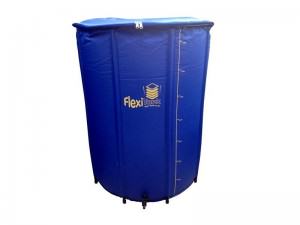
The nutrient tank is an important point to keep in mind because it’s used to irrigate all the marijuana plants of the growroom. If you buy a hydroponic system, this already includes a tank to irrigate the specific number of plants recommended by the manufacturer. Otherwise, if you want to grow in coco coir, expanded clay, or mapito in plant pots you have to consider the number of plants to grow in order to fill the tank with the necessary reserves of nutrients for one week.
In the case of non-recovery growing systems - systems without recirculation of the nutrient solution- you will have to calculate the size of the tank according to the number of plants you're going to grow and the maximum dosage of irrigations to realize. If you grow a SOG using 30 plants per m2 with a maximum of 8 irrigations per day - 1-minute duration - with a dosage of about 40 ml per minute you will need a tank of about 70-80 liters.
If instead of a SOG you want to grow a SCROG, you can calculate the maximum irrigations per day and pot taking into account the volume and the amount of pots to irrigate. You can use a digital timer with multiple programs to suit the irrigation to the needs of your crop.
How to calculate our tank capacity:
(Number of plants) x (Number of irrigations per day) x (Dosage per irrigation) = Litres per day.
(Litres per day) x 7 days = Litres per week
Example for SOG crops:
(9,6 L/day) x (7 days) = 67,2 L/week + 10 Litres of reserve for the pump = tank of 80-90 Litres (since you won't fill it up completely)
Example for SCROG crops:
(6 plants/m2) x (8 irrigations) x (10-15% of the pot size (11L) in L/day) = 7,92 L/day
(7,92 L/day) x (7 days) = 55,44 L per week = ideal tank size of 80L
Temperature and oxygenation of the nutrient solution of the tank
As mentioned before, you should carefully check and monitor the tank and its nutrients, because this is the source that provides the plants with a good feeding, and taking care of it will spare us from several nutritional issues that are common in marijuana plants. On first place you should make sure that the fertilisers used are chelated and specific for growing on coco coir or hydroponic systems. If you use any biological fertiliser, your plants won’t be able to properly absorb the nutrients as they should, so their yield will be seriously diminished.
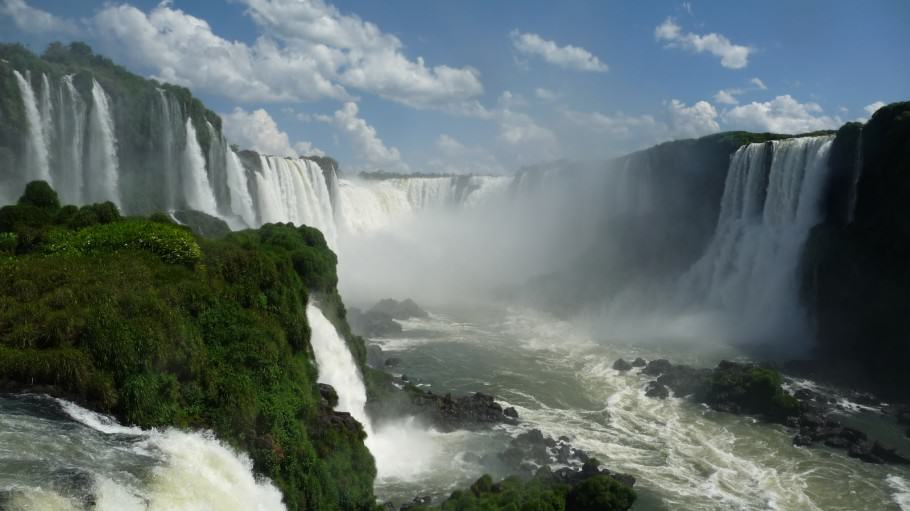
There are lots of fertilisers or supplements for fertilisers that are 100% organic, but they’re chelated with amino acids for an optimal absorption of nutrients - as in the case of Aptus fertilizers. There are many other fertilisers for growing in hydroponic systems, but in most cases the chelated form is mineral and not amino acid chelated.
Dosing correctly the fertilisers in the tank is also very important, because it’s always better to follow a logical order for an exhaustive control of the nutrient solution. First, you should put the base fertiliser. The dose is usually from 1 to 2. 5 ml per litre of water according to the growing period in which the plant is, starting with the lowest dose and gradually increasing it until the recommended maximum dose is reached (depending on the concentration of the used fertiliser). The next step is to add the stimulants, amino acids or other components such as bacteria or mycorrhizae.
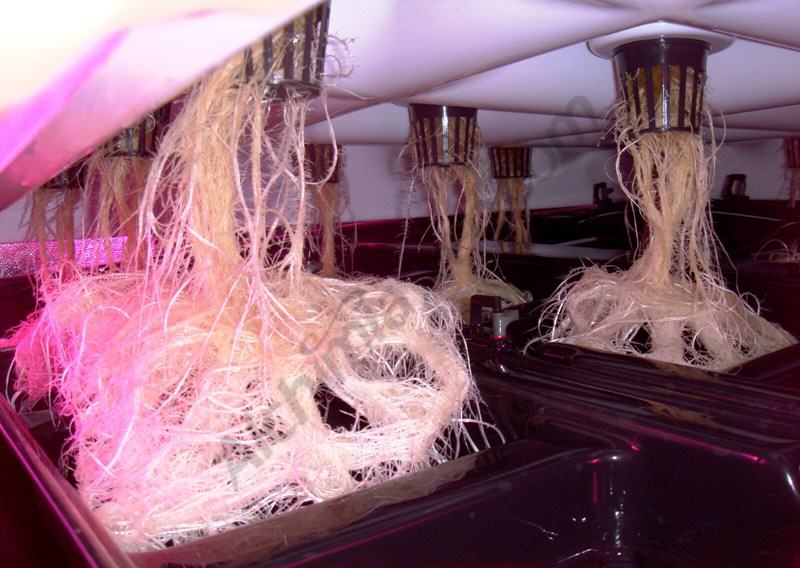
The last step is adjusting the PH level. After that, you can already irrigate all plants with this nutrient solution. As the hours pass, the PH level will gradually rise, so you will have to lower it again before watering your plants again. As we have already mentioned before, you can allow a small fluctuation of the PH level before lowering it the next day with any citric acid or PH down solution. If you use an automatic irrigation system, it’s convenient to lower it just before turning on the pump; in this way, every irrigation will be with a different PH level within the optimal range, to absorb all the nutrients needed for a better plant development.
Another important point to keep in mind is the temperature of the nutrient solution in the tank. The temperature is always directly related to the level of oxygen in a nutrient solution. A higher temperature means less oxygen in the water, so an optimal temperature is between 18 and 22 degrees Celsius. This mentioned temperature intervals will be the most appropriate in order to maintain constant and adequate levels of oxygenation in our nutrient solution, to facilitate the feeding of the plants and the maintenance of the nutrients in the tank.
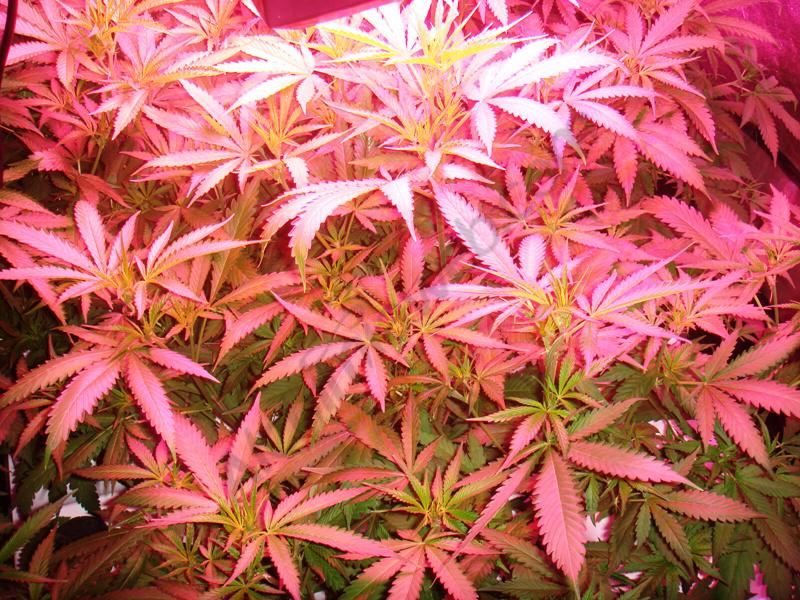
H2O Temperatures vs Oxygen table
To improve the oxygenation of the tank, in addition to have the temperature controlled, you can add an air pump connected to a non-toxic silicone tube and a diffuser stone to spread out the oxygen in small bubbles, keeping the nutrient solution properly oxygenated.
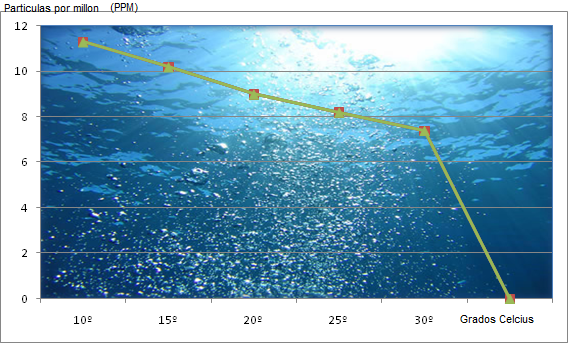
A high temperature will negatively affect all marijuana crops, being more harmful firstly in aeroponics, hydroponics, coco and soil. The reason is simple; in the first two growing systems the water is the main live sustenance and the root system is much more unprotected. In the case of coco coir and soil this factor is also important although our plants will have a greater resistance to a high water temperature, since in these substrates the roots are more protected than in hydro and aero systems.


































































